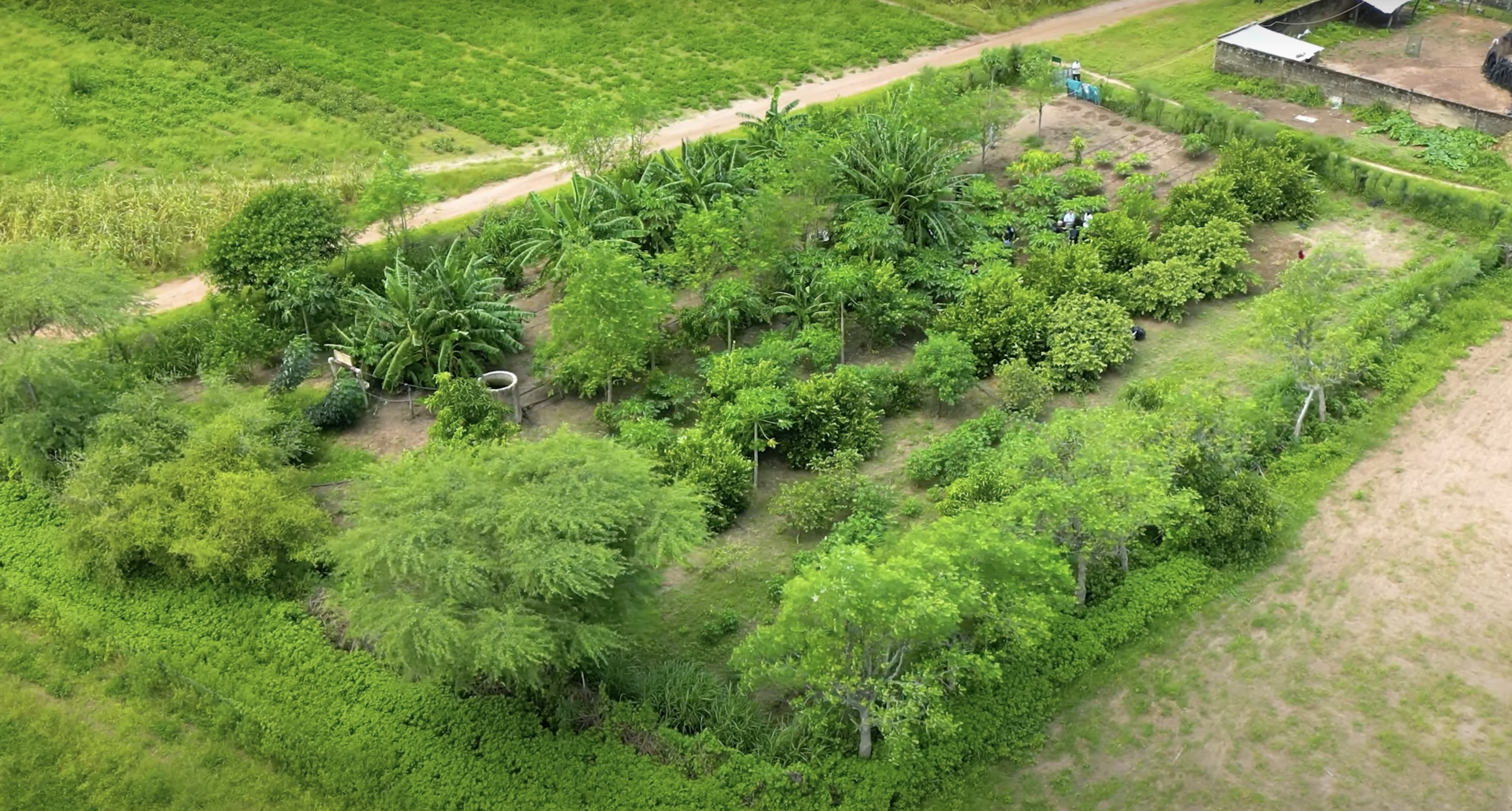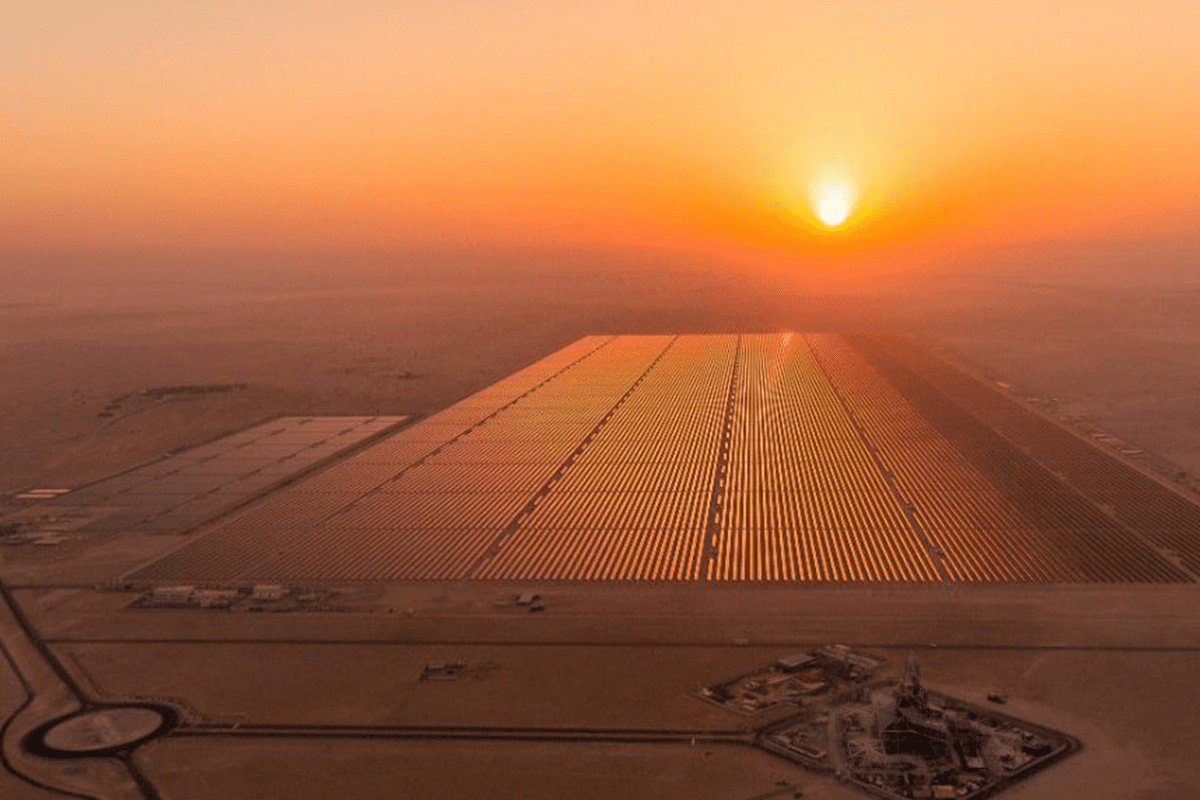Permaculture instructor Andrew Millison journeys to Senegal to see a movement of forest gardens which are contributing to Africa’s Great Green Wall. Andrew accompanies the organization Planet Wild to visit the excellent work of Trees for the Future. Planet Wild is funding the planting of 40,000 trees in this project so we are here to assess the system and report on the situation on the ground. https://www.youtube.com/watch?v=1LCTVO_Y5Rs
Permaculture Instructor Andrew Millison visits the largest reforestation project in the world in the Southern Indian States of Tamil Nadu and Karnataka with the Isha Foundation, founded by Sadhguru. Andrew spent 5 days traveling around the Cauvery River watershed looking at the work of the Isha Foundations’ Cauvery Calling project, touring farms, nurseries, temples, and talking with Isha’s field agents. Andrew then went to Isha’s ashram in Tennessee and was able to directly question Sadhguru
Trees, forests, vegetation cools the planet! We have stated that again and again. Here is another very interesting study, underlining the function of vegetation for the climate: In the course of global warming due to climate change, temperatures in North America have risen by an average of 0.7 degrees Celsius. Except on the US East Coast, which cooled by around 0.3 degrees Celsius between 1900 and 2000, which scientists refer to as a “warming hole”.
Permaculture instructor Andrew Millison journeys with the UN World Food Programme to the Northern border of Senegal to see an innovative land recovery project within the Great Green Wall of Africa that is harvesting rainwater, increasing food security, and rehabilitating the ecosystem. https://www.youtube.com/watch?v=WCli0gyNwL0
Frontiers is looking for paper submission on the subject “Rehydrating Planet Ear”. Perhaps interesting for somebody reading this blog? Pretty cool thing it’ll be, that final publication! “We are particularly interested in the synthesis of watershed or landscape level restoration efforts that provide vivid examples of how the scaling up of restoration efforts can have synergistic effects on water cycling or recycling that small-scale projects cannot attain on their own. We seek 12-20 manuscripts from
Solar parks with gigantic dimensions are particularly worthwhile in dry, inhospitable areas with many hours of sunshine. A study using weather models shows that the dark areas can ultimately produce rain in arid areas: Air inevitably rises above such a large and warming area. This creates convection currents, which are responsible for cloud formation. Only one more ingredient is missing: moisture in the air. And this is exactly what is found in the Persian Gulf,
Interesting article from Erica Gies: “Decisions about land use and infrastructure have left little space for water, amplifying the effects of natural disasters and climate change.” Society has dammed and diverted two-thirds of the world’s large rivers, drained as much of 87% of global wetlands and degraded 75% of Earth’s land area. A study found that, from 1992 to 2019, humans have encroached on 600,000 square kilometres of floodplains — an area about the size
The last post on heat extremes in soils states (from the press release of the scientific publication): When the temperature in the soil is higher than in the air, additional heat is released to the lower atmosphere – causing temperatures in the atmosphere to rise. “Soil temperature acts as a factor in the feedback loop between soil moisture and temperature and can thus intensify heat waves in certain regions”. I find this sentence particularly interesting
Interesting study: “For a long time, little attention was paid to soil temperatures because, in contrast to near-surface air temperatures, there was hardly any reliable data available due to the significantly more complex measurement process. A research team led by the Helmholtz Center for Environmental Research (UFZ) has now established not only that ground and air temperatures can differ, but also that climate change has a much greater impact on the intensity and frequency of
Research highlights benefits forests bring surrounding regions in terms of cooler air and more rainfall. Deforestation has a far greater impact on regional temperatures than previously believed, according to a new study of the Brazilian Amazon that shows agricultural businesses would be among the biggest beneficiaries of forest conservation. The paper demonstrated Amazon deforestation causes warming at distances up to 60 miles (100km) away. The greater the forest clearance, the higher the temperature. More recently,
Trees make clouds by releasing small quantities of vapors called “sesquiterpenes.” Scientists are learning more—and it’s making climate models hazy. Half of Earth’s cloud cover forms around stuff like sand, salt, soot, smoke, and dust. The other half nucleates around vapors released by living things or machines, like the sulfur dioxide that arises from burning fossil fuels. Trees emit natural volatiles like isoprene and monoterpenes, which can spark cloud-forming chemical reactions. The team shows that
Very important article on the link between deforestation, evapotranspiration and rainfall: Even at a small scale, they found an impact, but the decline became more pronounced when the affected area was greater than 50km squared (2,500 sq km). At the largest measured scale of 200km squared (40,000 sq km), the study discovered rainfall was 0.25 percentage points lower each month for every 1 percentage point loss of forest. This can enter into a vicious cycle,
Very interesting presentation of Hubert Savenije (Delft University of Technology, The Netherlands) at the 2012 General Assembly of the European Geosciences Union. It is very fascinating research showing how much rain on land stems from the recycling of water on land (“precipitation recycling”) – and that is partially huge! Combine this with the “flying rivers” from Antonio Nobre (and others) and the biotic pump from Anastassia Makarieva (and others) – and its a perfect set
Alpha Lo has written a very interesting paper (her part I, here part II) on the way scientists tried to explore, analyse and estimate where the rain comes from (the ocean or/and the land), respectively how much from the one and the other, and what role vegetation plays in this context. In addition, he wrote a fascinating piece called “The climate model approximation that could fundamentally change the climate movement“. Worth reading. All of these!
This graphics [1] very nicely outline the consequences of large-scale logging – and then later monocultural afforestation – on the landscape. Without forest, no more soil, no water absorption, ergo soil erosion, silting, (flash) floods. Coniferous forest monocultures do only help in the short term – they do not form fertile soil, and are harvested in clear-cutting. Solution: Diverse permanent forests. Hmm, that’s not so difficult to understand, is it?! [1] https://thespinoff.co.nz/society/28-07-2023/the-side-eye-deeper-roots
Great article [1] which portrays the reasons, how and why the approach to climate change, which at the beginning analysed both land changes and greenhouse gases changed to only consider the latter. Starting with a MIT publication called “Inadvertent Climate Modification: Study of Man’s Impact on Climate” in 1971 and a WMO publication “Proceedings of the World Climate Conference: Conference of Experts on Climate and Mankind” in 1979, land use changes were in equal discussion
Nature can’t be seen and analyzed linearly. She is always more complex. That’s why we must look at how the cycles of carbon, water and energy are closely coupled. Here is a draft sketch of mine to show this. How is incoming solar radiation transformed on the ground – producing latent energy (therefore water is needed) or sensible heat? Sensible heat means higher reradiation from the land into the atmosphere – a key factor for
Great podcast [1]: “A conversation with Alpha Lo, physicist and writer of the Climate Water Project, about the importance of slowing water down, the connection between drought, fire, and floods, and the massive role water plays in heating and cooling our planet. Trees create rain not the other way around. There is just so much to learn about water in all its forms, what it does when it’s part of a healthy watercycle or what it
“Regenerating life“: Great documentary by John Feldman on the role of vegetation and healthy soils for climate cooling and the strengthening of the small water cycle. It is a powerful told story, which looks at many aspects of nature’s role producing the right conditions for life. It tells another story of climate change, and the potential we have in changing the path towards the future. It’s not yet available as such, but you can support
Somewhat provocative question: however, if the statement is (somewhat) true: “Regardless of how many greenhouse gas molecules are in the air, what determines the greenhouse gas effect is the amount of reradiation emanating from the earth.” then we should think about the effect of warming from PV systems. In my talks, people often ask about the effect of PV systems – and they do, in fact, have the same effect as open ground or asphalt.



















